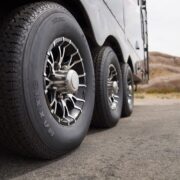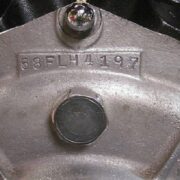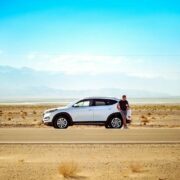Road salt and a sodium solution known as brine both have equal potential to destroy automobiles. Sodium is a reactive agent that oxidizes metals. When it comes to vehicles, water has a way of seeping into the nooks and crevices that are hidden from the naked eye. These hidden spots are most prone to the development of oxidation and cancer. The undercarriage is the primary target for salt to start destroying a vehicle. Brake lines, exhausts, and any unpainted surface has the potential to develop rusting and scaling overnight.
All it takes is a scratch in the paint to start the rusting process. If there is any surface that is unsealed, the erosion from oxidation can start working from that little crack in the seal and start eating at the metal below the surface of the paint. In the wintertime, it may be difficult to wash your vehicle. Many people in the northern states that receive a lot of snowfall take their vehicles to automatic car washes when they see the white residue of salt accumulating on the surfaces of their vehicles. These automatic car washes usually have selections to wash the undercarriage. However, they may also damage paint surfaces and open up the possibility for rust by stripping off the hard wax and creating micro-scratches in the surface.
The threat of road salt and brine does not disappear in the summertime. In the summer, the accumulation of the road salts is what draws deer and other critters to the side of the roads. It is still present and can mix in with the road water after a hard rain to create a caustic bath for your vehicle. In the summertime, it is easier for car owners to wash the vehicles themselves and apply a hard wax to the surfaces for greater protection. Some drivers will ride back and forth over a lawn sprinkler or use a power washer to maintain their undercarriages in warmer weather.
One of the best investments for drivers to protect their undercarriages is applying undercoatings. Most automotive supply stores sell a rubberized undercoating that comes in an aerosol can for you to apply yourself. However, it is more desirable to have the thick tar-like asphalt-undercoating applied by your dealer when you purchase a new vehicle. These undercoatings will protect the body of your vehicle but do little for the mechanical parts below. Mufflers, axles, differentials, and brake lines can still suffer extensive damage from the weather and rot out quickly. Nevertheless, undercoating is a good investment if you want to ensure that the difficult to repair shell of your vehicle remains intact.
One of the newest products to hit the market presents a solution for salt oxidation on all surfaces. Topcoat F11 is a surface sealant that is made of very fine molecules that penetrate deep into the pores of any automotive surface. The compound sticks to itself and accumulates like a hard wax. However, it works better than a hard wax by repelling dirt rather than becoming a bed for it to accumulate and stick. You will still obtain the mirror finish on your smooth surfaces and the water beading that you would with a hard wax. The difference is that the sealant can be applied to all surfaces: plastic, metal, rubber, glass, exhaust, engines, etc.
This is a great way to seal your undercarriage and other parts for the winter. Top Coat can even be applied to the wheels to prevent the accumulation of brake dust. The beauty of this latest scientific innovation is that it lasts months and protects all surfaces against the penetration of rust. It is non-greasy yet acts a lot like silicon in repelling water and preventing corrosion on any surface. You simply spray Top Coat on any part of your vehicle and wipe it clean every 3 to 6 months. This versatile patented water or waterless car wash product cleans itself during a hard rain or with a soft microfiber cloth and no water at all.
The choice is yours when it comes to protecting your vehicle from salt. UV damage is one of the quickest depreciations to the value of your vehicle. If you have ever had a pair of colorful seat covers in the hot southern sun for a few months turn old and faded, you know how powerful the bleaching effect of the sun can be. Top Coat protects against UV damage and is safe to use on windows instead of products like Rain-X. Better yet, you can use Top Coat on the plastic windows of convertibles and convertible tops to repel the water like a duck.
Whether you choose the traditional route for protecting your vehicle against the oxidating elements of the road, the modern Top Coat solution, or a mix of old and new methods, we are sure that you will protect your big investment best by experimenting with all of the above.















Comments